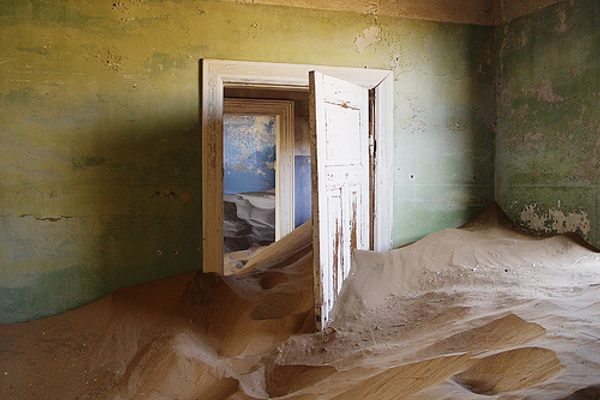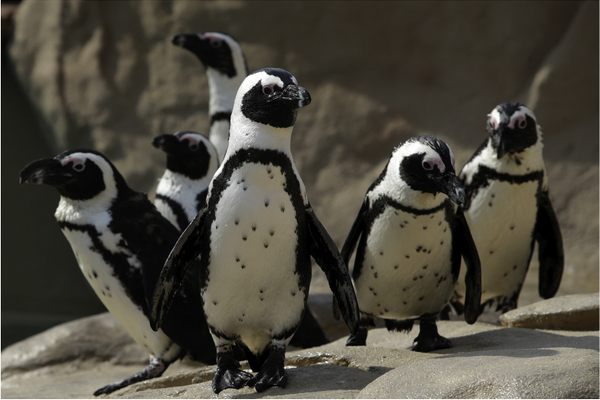Accessible Independent Travel Is for All Ages and Abilities
See the world “any which way” you can, says a seasoned traveler in her 70s.
In Atlas Obscura’s Q&A series Exploration for Everyone, we chat with everyday adventurers and dauntless world travelers about finding wonder without limits.
Let’s face it: You don’t get to more than 60 countries across six continents without a lot of planning, perseverance, and creative thinking. From her home in Bengaluru, in southern India, Sudha Mahalingam has explored some of the world’s most remote destinations, from the temples on China’s sacred Mt. Emei to the towering dunes of Namibia, and its most iconic cities, from Chicago to Venice.
The retired professor and economist is something of a travel anti-influencer, eschewing selfies for immersive experiences, such as sailing up the Mekong River on a trip of “leisurely discovery.” Other adventures have been decidedly less leisurely, including ziplining and skydiving. Mahalingam, now in her 70s, usually travels alone, but is sometimes accompanied by her husband Mali, who has Parkinson’s disease, which can complicate the planning process but doesn’t stop them from doing “crazy things.”
Mahalingam collected some of her wildest travel stories in the 2019 book The Travel Gods Must Be Crazy, and shares others on her blog, Footloose Indian. Atlas Obscura spoke with Mahalingam, with Mali at her side, about her adventures and the travel philosophy that makes them possible.

How have you made exploration a priority throughout your life?
My general philosophy is to travel any which way, whenever I get the chance. My mother used to tell me when you want to swim in the ocean, you can’t wait for waves to subside. There will always be waves of impediments you’ll face during your life, and whatever you want to do in the midst of all this, you have to do it. That stuck in my head. I decided, even if I had small children, even if I had a full-time job and a demanding household to take care of, I would still go when I got the chance.
What’s been your biggest challenge when it comes to traveling?
The major impediment for me is money. We’re not rich, we’re middle class. But other than travel, I don’t do much; I can make one big trip every year. [When I was younger] there was no money for travel. So I got a job that took me places. Once I got the visa and the ticket for one place, to make the journey from there to another place was not that expensive or difficult. For example, I once spent a week in Granada [in Spain] at a conference and traveled all over Spain and then crossed into Morocco.

Now that you’re retired and not traveling for work, how do you pick the places you visit?
I’m always watching documentaries, and the less-explored places speak to me.… I’m a traveler, I’m not a tourist. I don’t like visiting tourist places just to check them off my list. I want to get a feel for the place. I’m especially attracted to cultures that are very different from my own.
Your book and blog are full of adventures that sometimes didn’t turn out as planned. Tell us about one of your more memorable travel-gone-awry moments.
I got locked up in a minaret in Yazd, Iran. At the time I went, Yazd had no hi-rises. It had adobe houses everywhere, and I wanted to take a good shot of them, from some height. I wanted to go up the minaret, but it was locked. [The caretaker] asked me to write a letter requesting that the door to the spiral staircase of the minaret be opened, so I did. I don’t think he understood English, but he was satisfied, so he opened the door then shut it behind me. It was Friday, there were so many people around. I went up and was taking photos and was lost in the beauty of the place.
After an hour or so, I came down and there was no one. Everyone had left. I kept banging and banging on the door and no one came to open it. I went back up to the top of the minaret, scanning the dark streets, hoping someone would pass by. Finally, I did manage to call out, and three women came and opened the door.

Mali sometimes accompanies you on your adventures, including on a recent self-drive trip through Namibia. What was that experience like?
The Namibia drive was really very beautiful. I had booked a vehicle and we traveled with a tent on top, just the two of us.… We camped for three days in Etosha National Park. It was wonderful to be camping because the sky is completely star-studded at night, and you could keep the flap open all night. It was quite safe. It was absolutely gorgeous staying on top of the jeep. And yes, Mali was able to get up the ladder and sleep in the tent.
How is it different, both traveling as a couple instead of solo, and traveling with someone who has mobility issues and other challenges?
I need to plan quite a lot when I travel with him. I can’t just go recklessly here and there. I don’t like to go in a group because if one person slows down the group, they don’t like it. But [in Namibia, for instance] we could go at our own pace. All I had to do was help him into the car and strap him up and go wherever.
You know, Mali never thought of traveling. He didn’t think it was possible. He thought, okay, travel is for my wife, she goes and does crazy things. But then I made him do some crazy things and he realized it’s possible. I’m not saying it’s possible to do everything, but you can do a lot of the fun things…. If you can’t do something, there is always an alternative.

This interview has been edited for length and clarity. If you or someone you know has gone on an accessible adventure, let us know! We’d love to hear about it.











Follow us on Twitter to get the latest on the world's hidden wonders.
Like us on Facebook to get the latest on the world's hidden wonders.
Follow us on Twitter Like us on Facebook